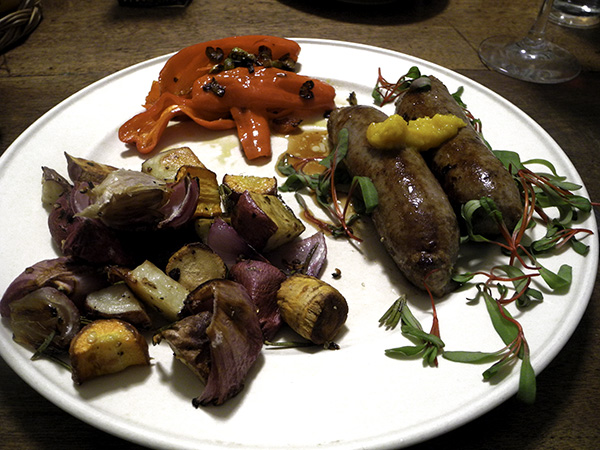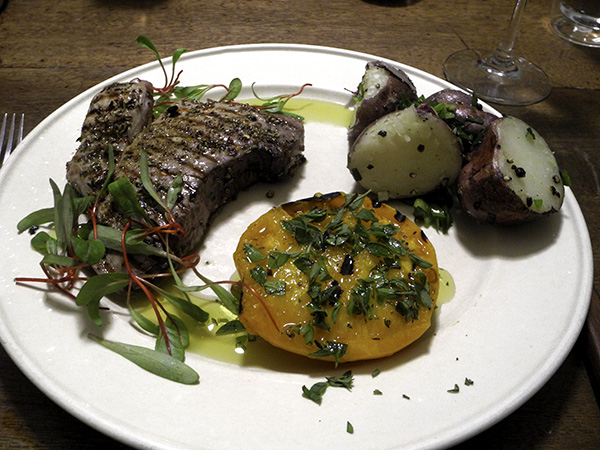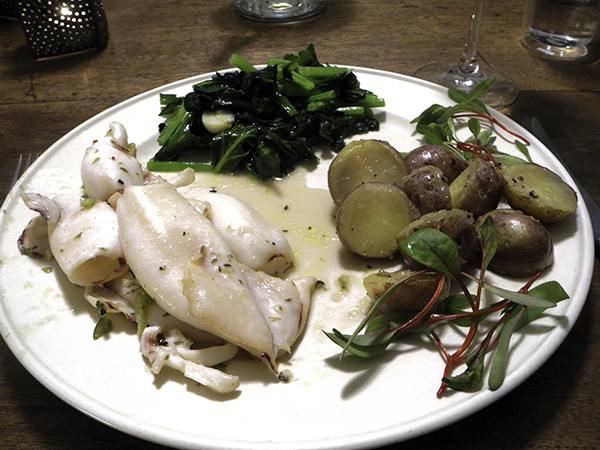
It’s simple, it takes less than a half hour to put on the table, and it feels right at any time of the year, but the ingredients should be the very best available.
By the way, forget you thought you knew about tuna casseroles: The Italians know how to incorporate [very good] canned tuna into any number of dishes, with astounding results.
- one medium roughly-chopped red onion from Norwich Meadows Farm, stirred in a couple tablespoons of olive oil over a medium-high flame inside a large enameled cast iron pot until softened, followed by a teaspoon of crushed dried Itria-Sirissi chili, pepperoncino di Sardegna intero from Buon Italia in the Chelsea Market, a generous amount of freshly-ground black pepper, 2 tablespoons of salted Sicilian capers, thoroughly rinsed, and the contents of one 14-ounce can of Mutti cherry tomatoes (Ciliegini), the tomatoes themselves first halved, the mixture cooked, stirring occasionally, until the tomatoes began to break up, the heat then lowered and the pot kept on the flame for 5 or 10 minutes more, then just before the pasta itself (8 ounces of [Setaro spaghetti from Buon Italia]), boiled barely al dente was added, 6 ounces of Ás do Mar belly meat tuna in olive oil, already slightly flaked with a fork, slid into the sauce and mixed in, some reserved pasta water added and stirred in to ensure the pasta was not really dry, arranged inside 2 shallow bowls, garnished with chopped parsley from Westside Market
- the wine was a Portuguese (Alentejo) red, Luis Vieira Montaria Gold 2016, from Naked Wines
- the music was Wagner’s ‘Der fliegende Holländer’, Marc Minkowski conducting Les Musiciens du Louvre






